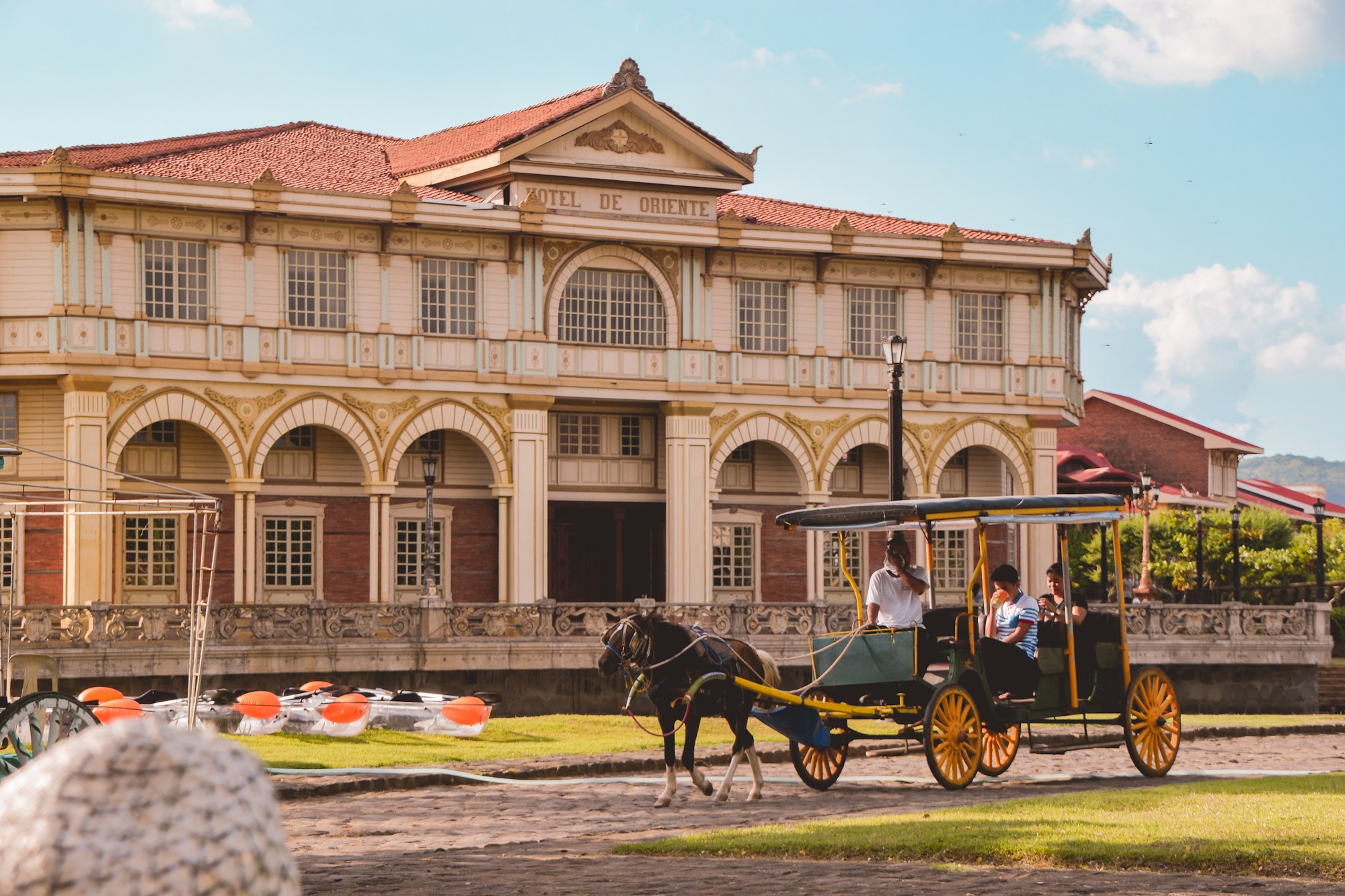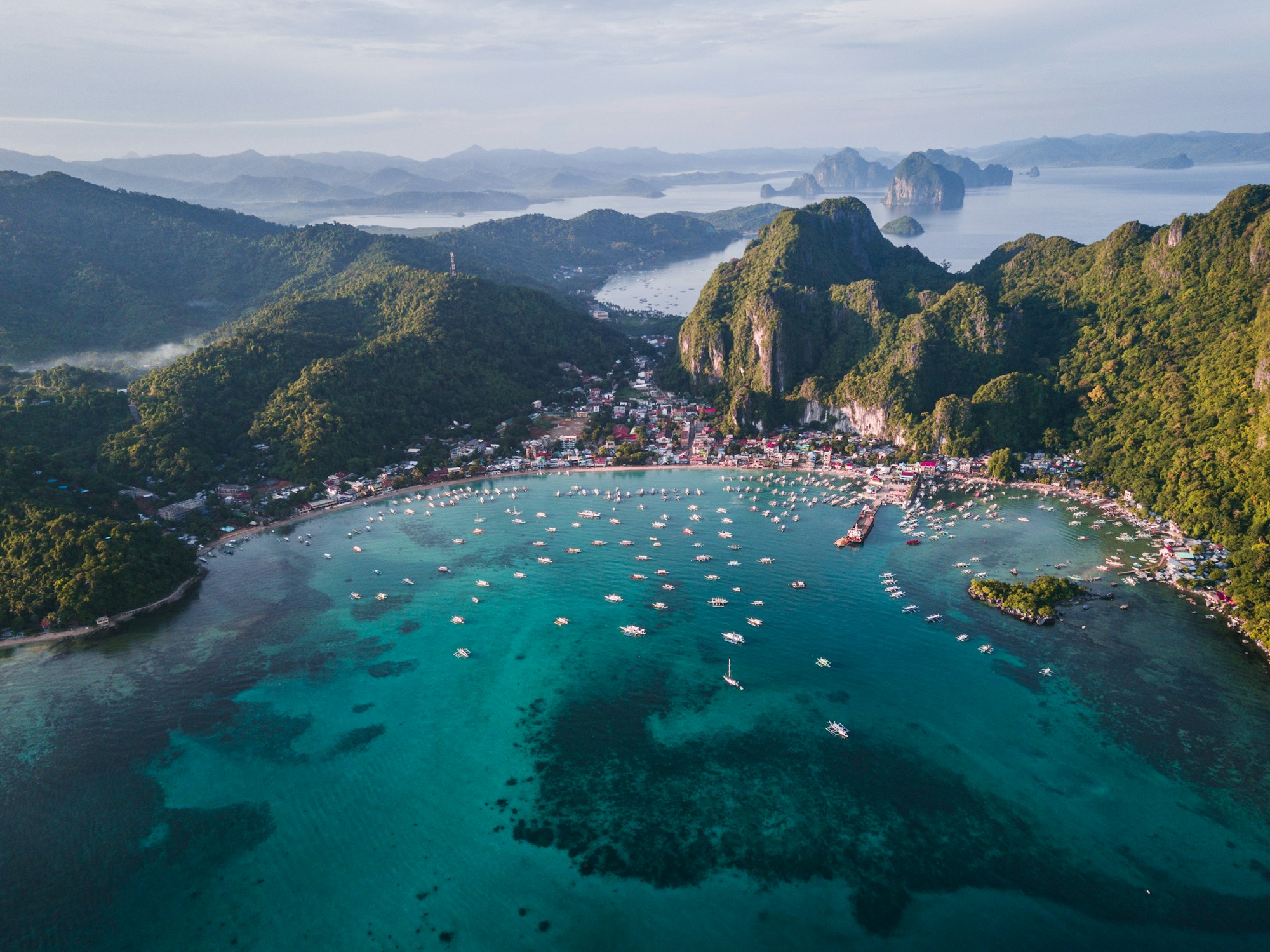Philippines travel electricity guide: power plugs, electrical outlets, voltage, frequency.
It is important to note that power outages can be expected in the Philippines, especially in more rural areas. Bringing a portable charger or power bank is a good idea to keep your devices charged during power outages.

Philippines travel power plugs are known as Type A and Type B plugs. The electrical system in the Philippines uses 220-240 volts at a frequency of 60 hertz, which is similar to the electrical systems used in most of Europe and Asia.

Plugs
The power plugs in the Philippines have two parallel flat blades and sometimes a grounding pin. These power plugs are known as Type A and Type B plugs. Type A plugs are ungrounded and have two dull parallel blades, while Type B plugs have a grounding pin and two flat blades.
The electrical outlets in the Philippines are designed to accept either Type A or Type B plugs. However, if you are traveling from a country that uses a different type of plug, you must bring an adapter to use your electrical devices.

For Europe, except the UK
The power plugs for the Philippines, and most of Europe (except for the UK) differ. The power plugs in the Philippines have two parallel flat blades and sometimes a grounding pin. These plugs are known as Type A and Type B plugs.
Most countries in Europe use power plugs and sockets with two round pins. These plugs are known as Type C plugs. Some European countries, such as Germany and France, also use Type E and Type F plugs, which have two round pins and an additional grounding pin.
Therefore, if you are traveling from a European country to the Philippines, you must bring an adapter that can convert your Type C, Type E, or Type F plug to a Type A or Type B plug to use your electrical devices.
For North and Central America or Japan
The power plug adapter for the Philippines is similar to those used in North and Central America or Japan, but the blades are slightly different in size and shape compared to those used in the Philippines.
North and Central America use Type A and Type B plugs, similar to the Philippines power plug adapter. Therefore, if you are traveling from North or Central America or Japan to the Philippines, you will not need a voltage converter, as the voltage and frequency are the same.
However, you will need an adapter to convert your Type A or Type B plug to a Type A or Type B plug in the Philippines to use your electrical devices.
For the UK, Ireland, Cyprus, Malta, Malaysia, Singapore, or Hongkong
The power plugs used in the Philippines differ from those used in the UK, Ireland, Cyprus, Malta, Malaysia, Singapore, and Hong Kong.
- The power plugs and sockets in the UK, Ireland, Cyprus, and Malta have three rectangular prongs arranged in a triangular pattern. These plugs are known as Type G plugs.
- In Malaysia, Singapore, and Hong Kong, the power plugs and sockets have three rectangular prongs arranged straight. These plugs are known as Type G and Type D plugs.
Therefore, if you are traveling from the UK, Ireland, Cyprus, Malta, Malaysia, Singapore, or Hong Kong to the Philippines, you will need an adapter that can convert your Type G or Type D plug to a Type A or Type B plug to use your electrical devices.
Conversely, if you are traveling to the Philippines from these countries, you will need an adapter to convert your Type A or Type B plug to a Type G or Type D plug to use your electrical devices.
For Australia, NewZealand, South Africa, Argentina, or parts of China
The power plugs and sockets in Australia, New Zealand, South Africa, and parts of China have three flat prongs arranged in a diagonal pattern. These plugs are known as Type I plugs.
The power plugs and sockets in Argentina have two flat blades and a grounding pin arranged in a V-shape. These plugs are known as Type I plugs with a particular configuration.
If traveling from Australia, New Zealand, South Africa, Argentina, or parts of China to the Philippines, you will need an adapter to convert your Type I plug to a Type A or Type B plug to use your electrical devices.
Conversely, if you are traveling from the Philippines to these countries, you will need an adapter to convert your Type A or Type B plug to a Type I plug to use your electrical devices.
However, if you are traveling to the Philippines, you need to know about the voltage and frequency to bring an adapter to use your electrical devices.
2. Voltage and Frequency
The voltage and frequency used in the Philippines are 220-240 volts AC and 60 Hz, respectively. This means that electrical devices designed for use in countries with 220-240V/60Hz power systems can be used in the Philippines without needing a voltage converter or transformer.

If you are from North and Central America or Japan
In North and Central America, including the United States and Canada, the voltage and frequency used are 110-120 volts AC and 60 Hz, respectively.
In Japan, the voltage is 100 volts AC, and the frequency is 50 or 60 Hz, depending on the region.
This means that if you are traveling from North or Central America or Japan to the Philippines, you will need to use a voltage converter or transformer to safely use your electrical devices designed for use in countries with 110-120V/60Hz or 100V/50-60Hz power systems.
It is important to note that some modern devices, such as laptops and smartphones, have universal power supplies that can accept various voltages and frequencies. These devices can be used in the Philippines and North and Central America, and Japan without needing a voltage converter or transformer.
If you come from the rest of the world (except some areas in the Philippines, Peru, South Korea, and Brazil)
In most parts of the world, including Europe, Africa, and Asia (except for South Korea), the voltage used is 220-240 volts AC, but the frequency used is 50 Hz, which is different from the Philippines.
In South Korea, the voltage used is 220 volts AC, and the frequency used is 60 Hz, the same as in the Philippines.
This means that if you are traveling from the Philippines to most parts of the world, except for some areas in Peru, South Korea, and Brazil, you will need to use a voltage converter or transformer to safely use your electrical devices that are designed for use in countries with 220-240V/60Hz power systems.
Suppose you are traveling from these regions to the Philippines. In that case, you will need to use a voltage converter or transformer to safely use your electrical devices designed for use in countries with 220-240V/50Hz power systems.
What if you don't have the correct plug?
If you do not have the correct plug when traveling to the Philippines, you have a few options:
Purchase an adapter: You can purchase an adapter, also known as a travel plug or plug adapter, that allows you to use your device's pin with the electrical outlets in the Philippines. Adapters are widely available in travel stores, online retailers, and airports.
Use a universal adapter: A universal adapter is a versatile device that can work with multiple plug types and be used in various countries. Some universal adapters have built-in voltage converters or transformers, which can help you safely use your device in countries with different voltages and frequencies.
Use a USB charger: Many electronic devices, such as smartphones and tablets, can be charged using a USB cable. In this case, you can use a USB charger with a plug compatible with the electrical outlets in the Philippines.
It is important to note that some modern devices, such as laptops and smartphones, have universal power supplies that can accept various voltages and frequencies. If you are planning to travel to the Philippines, it is recommended that you bring a universal adapter that can handle Type A and Type B plugs to ensure that you can use your electrical devices while you are there.
